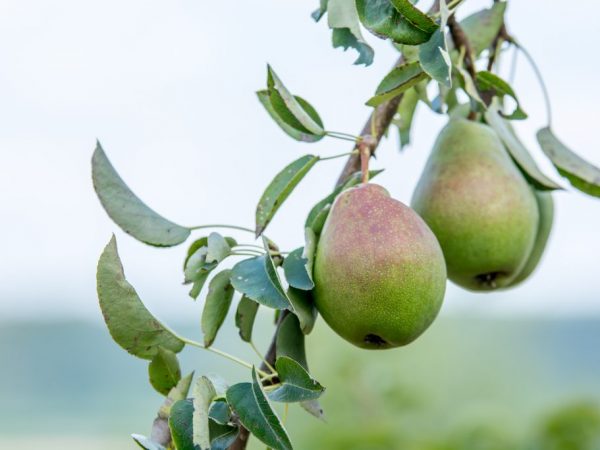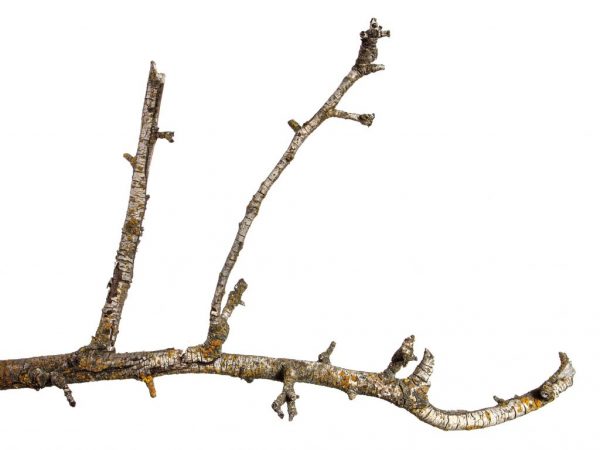Why has the pear dried up
When growing a garden pear, you can face various problems, and the most common among them is the drying out of the tree, branches or fruit ovary. To avoid the question of why the pear has dried up, you should know the causes of possible diseases and how to deal with them.

Why has the pear dried up
Why does a pear dry up
The first signs of the disease may be changes in the appearance of the leaves, changes in their color, dryness and falling off.
Why pear dries:
- climatic conditions;
- improper care;
- waterlogging;
- moles or insects;
- fungus.
Climate influence
Before planting a pear on a site, you need to choose a variety based on the climate in which the tree will grow. The varieties are divided into northern and southern varieties. And in the conditions of the southern heat, the pear bred for the northern regions will simply die, dry out.
Very coldy
After severe frosts or if the winter has little snow, frost breaks appear in the spring. Only the delicate tips of the branches or whole large areas on them or on the trunk may be affected. The movement of the juice is disturbed here. Over time, these places dry up and die off. If this happens, all affected areas should be removed. Treat the slices with garden pitch. For prevention, it is necessary to carry out mulching and do insulation for the winter. Saplings can be covered with roofing material or spruce branches. Spruce branches will also protect trees from rodents if they are tied to adult plants from below.
Pear care
The pear needs regular care. Make sure that there is no waterlogging or drying out of the root zone. Fertilization is required. Depending on the season, different types of fertilizers are used: phosphorus, nitrogen, mineral and potash. Their deficiency especially affects the drying of the leaves.
Pear does not like high groundwater. When disembarking, you must carefully choose a place. Leaf drying problems are often seen with lowland plantings.

Pear dies from groundwater
Hot sun rays, when directly hit, leave burns on the leaves. The delicate cover does not withstand this, dries and falls off. Therefore, it is better to choose a landing site so that the lighting is no more than 5 hours. Otherwise, not only foliage will suffer, but also the future harvest. The tree may stop bearing fruit.
When planting, the root collar of seedlings should be above ground level not lower and not higher than 5-6 cm. This will prevent decay of the trunk, drying out and shedding of foliage at an early stage of development.
Influence of moisture
Humidity of air and soil is of great importance for the proper growth of a fruit tree. Excess water in the soil will lead to the development of small leaves and their wilting. If the ground is too dry, then the green cover will turn yellow, then darken and fall from the branches to the ground.
The gardener must be sensitive to all weather conditions, commensurate with them the need for watering and observe the tree. If the top is dry, then the whole tree can get sick.
Harm to moles and insects
Leaves dry out due to the influence of moles.They dig holes in the roots and gnaw them. With severe damage, the foliage is completely shed. To fight, it is necessary to heavily water the root zone so that all the mole tunnels collapse. The roots of the tree will be able to form a tighter bond with the ground. And the recovery will gradually take place. You can dig in special noisemakers so that the moles leave these places forever.
Insect pests feed on the sap and leaves of the tree. When such phenomena appear, the tree reacts by drying out, twisting and dropping diseased leaves on the ground.
Diseases
The pear can dry out if it is struck by a disease. The foliage on it turns black and falls off very quickly. The most common occurrence is scab. It manifests itself as characteristic black dots on the leaves. Very quickly, the spots increase, cover the entire leaf, after which the foliage falls off.
It is necessary to treat the fungus with antibiotics and fungicides when the first signs are detected. To prevent the disease from engulfing the entire garden, other neighboring trees must also be cultivated.
Leaf rust is a fungal disease of the Pucciniaceae family. Light yellow spots appear first, then dark orange. These leaves dry up and infect others. They must be destroyed immediately. If the disease has managed to capture the fruits, they must also be removed.
Black cancer is a pathogenic fungus that settles on the branches or trunk of a plant. It manifests itself for several years. Small cracks appear initially, increasing in size over time. The bark is torn, and characteristic brown spots appear along the edges. It's like open wounds on the branches and trunk. They get microbes and fungal spores. For treatment, all affected branches and bark should be cut off and treated with copper sulfate. It is good, after processing, to wrap the trunk, in the area of the former defeat, with burlap. After a while, the tree will regain its strength and will bear fruit well again.
The pear can dry out due to cytosporosis. The disease has a second name - stem rot. The causative agent is the viral fungus Cytospora leucostoma. Externally, it manifests itself in a red-brown color in places of damage on the bark or branches. The reason for the appearance may be sunburn or freezing. For treatment, these areas or branches must be cut off and covered with clay. For prophylaxis, an external examination and whitewashing of the trunks should be carried out more often before the winter period.
Why can a young tree dry out

Saplings must be healthy
A young tree may dry out due to simple damage to the seedling during or before planting. In the spring, you cannot plant a pear, it is better to do this in the fall.
If the rules for planting were not followed, the dimensions of the pit (width and depth) were not observed, the seedlings may not take root or dry out soon. If fertilizers are not applied during planting and immediately after it, this will contribute to the drying of the young tree.
Why pear fruits wither or dry
There are several reasons for this. This is a lack of nutrition, improper watering or fungal diseases.
The most common fungal disease is fruit rot. Young shoots look burnt. Fruits wither, brown spots appear, rot begins. This disease is typical for the second half of the summer season. It progresses very quickly (in 10-12 days). If you do not pay attention to this in a timely manner, you can lose the entire crop. All the fruits will rot, and the leaves will dry up and fall off. The bark may even suffer. It is recommended, immediately after the detection of such a disease, to cut off all affected branches and burn them. Treat the plant with a complex action fungicide.
Fruit often wither from a simple lack of nutrition and watering. The grower should follow a watering and fertilizing schedule that is appropriate for the climatic and seasonal conditions. Do not water directly under the tree trunk. The entire root system is located in the crown zone.
Conclusion
Simple rules for caring for fruit trees will help to avoid diseases, drying out of leaves and branches, damage to fruits.By observing them, you can avoid difficulties and get a healthy harvest.


